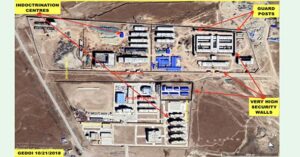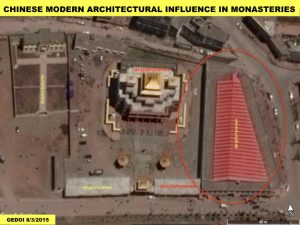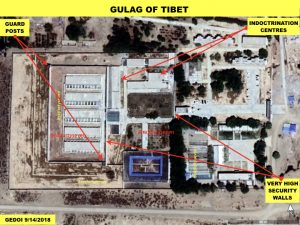
Photo : Col Vinayak Bhat (retd) / the Print
An exclusive satellite image published by the Print has revealed three new forced re-education camps under construction in the Tibet Autonomous Region. This refutes China’s claims that forced labour camps are being abolished. China refers to these camps as “Re-education Through Labour” (RTL) camps, although they are becoming known by the term “gulag” – which likens them to the Soviet Russian forced labour camps of the last century.
The Central Tibetan Administration (CTA)’s Human Rights Desk reports that China is now converting monasteries to gulags, or constructing new monastery gulags which target Buddhist monks and nuns in Tibet, and that they are being built on remote sites and with high security features including thick walls. The CTA has expressed concern, describing these developments as “alarming”.

Photo : Col Vinayak Bhat (retd) / thePrint
According to the CTA, innumerable Tibetans have been detained and tortured in RTL camps since 1955. They report that people have been interned in them for opposing the violation of human rights taking place in Tibet under Chinese Communist Party rule – and that this has been occurring since before China officially acknowledged the existence of RTL camps. In Tibet, RTL camps have existed since 1955, used to clamp down on people expressing opinions on China’s suppression of human rights, language, culture and religion – but were known by different names.
The Print published a previous article on August 1, 2018 reporting on China’s political re-education centres – in this case focusing on the camps in the Muslim majority Xinjiang Uyghur Autonomous Region which have been set up to “re-wire the political thinking of detainees”.

Photo : Col Vinayak Bhat (retd) / thePrint
The International Campaign for Tibet, the Washington-based Tibetan advocacy group, published a report on February 14, saying that a new training camp for Party workers has been opened in Tibet’s Shigatse prefecture “intended to provide ideological training to some of the thousands of Party cadres who have been deployed across Tibet in recent years in private homes, monasteries and schools and in line with Chinese leader Xi Jinping’s agenda of deepening control.”




 Print
Print Email
Email